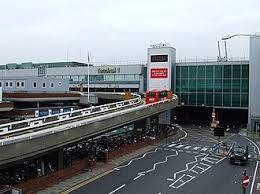The Dartford Bridge: Significance and Current Developments
Introduction to Dartford Bridge
The Dartford Bridge, officially known as the Queen Elizabeth II Bridge, plays a crucial role in connecting the counties of Kent and Essex in the United Kingdom. Since its opening in 1991, the bridge has been a vital part of the road network, facilitating the movement of millions of vehicles annually. As one of the busiest crossings in the UK, any developments or changes regarding the Dartford Bridge attract significant attention due to their impact on traffic flow and economic activities in the region.
Current Developments and Challenges
Recent reports have highlighted ongoing maintenance works aimed at ensuring the structural integrity of the bridge. As of October 2023, the Dartford Crossing faced delays due to essential upgrades, which include repainting and repairs of the road surface. These works are expected to last several months, with an anticipated completion by early 2024. Local authorities have encouraged drivers to avoid the area during peak hours and explore alternative routes to mitigate congestion.
In addition to maintenance, there are discussions surrounding the tolling system that operates at the Dartford Crossing. As part of a strategy to manage traffic and generate revenue for maintenance, the Dartford Crossing continues to have toll fees that have been a point of contention among regular users. Over the last year, local residents and transport groups have called for a review of these charges, advocating for a reduction or elimination of tolls to facilitate better access for local commuters.
Significance and Future Considerations
Looking ahead, the Dartford Bridge’s role in the UK transport network will remain critical. Plans to improve additional transport links in the surrounding areas are also underway, including a potential new crossing aimed at alleviating pressure on the Dartford Crossing. Residents and businesses alike recognise that while the bridge is essential for connectivity, ongoing infrastructure improvements are crucial for accommodating future traffic demands.
Moreover, environmental considerations are becoming increasingly important as the UK aims to meet its climate targets. Future developments may need to align with sustainable practices, ensuring that the Dartford Bridge and its approaches incorporate green technologies and methods.
Conclusion
The Dartford Bridge remains a significant piece of infrastructure within the UK, serving as a lifeline for commuters and impacting local economies. As maintenance works and discussions on tolls continue, the bridge’s future will rely heavily on the balance between accessibility, economic demands, and sustainability. For residents and regular users, staying informed about these developments will be crucial for navigating the changes that lie ahead.








